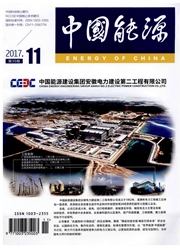

 中文摘要:
中文摘要:
本文采用Consumer Lifestyle Approach (CLA)方法,比较分析中国各地区和不同收入水平下居民的二氧化碳排放量。结果表明,城镇居民直接二氧化碳排放一直处于增长状态,农村增速较缓慢。城镇居民间接二氧化碳排放量高于直接消费。城镇居民食品、衣着、居住、教育文化是主要的二氧化碳排放源,农村居民食品消费占据主要比例。地区间的差异对于居民间接二氧化碳排放影响主要体现在总量上,收入水平对居民生活方式的间接二氧化碳排放量影响大,高收入水平的居民二氧化碳排放量高于低收入水平居民;收入水平越高,二氧化碳排放结构越多样化。根据研究提出了降低生活能源强度和二氧化碳排放强度的建议。
 英文摘要:
英文摘要:
This paper uses Consumer Lifestyle Approach (CLA) to analyze urban and rural residents CO2 emissions in different regions and income in China. Direct CO2 emissions of urban residents are growing faster than rural residents. Indirect CO2 emissions are more than direct CO2 emissions in urban residents. Food, clothing, housing, education, cultural and recreation services are the main sources of CO2 emissions in urban residents, food accounts for a major proportion of CO2 emissions in rural residents. The impact of CO2 emissions in differences regions is mainly reflected in the aggregate. The impact of resident's income is enormous, indirect CO2 emissions of high-income levels household are higher than the low income level residents. The higher the income, the more diversified the CO2 emissions structure. This paper presents some policy suggestions to reduce energy intensity and CO2 emissions in household consumption according to research.
 同期刊论文项目
同期刊论文项目
 同项目期刊论文
同项目期刊论文
 An overview of current research on EU ETS: Evidence from its operating mechanism and economic effect
An overview of current research on EU ETS: Evidence from its operating mechanism and economic effect How can China reach its CO2 intensity reduction targets by 2020? A regional allocation based on equi
How can China reach its CO2 intensity reduction targets by 2020? A regional allocation based on equi 期刊信息
期刊信息
